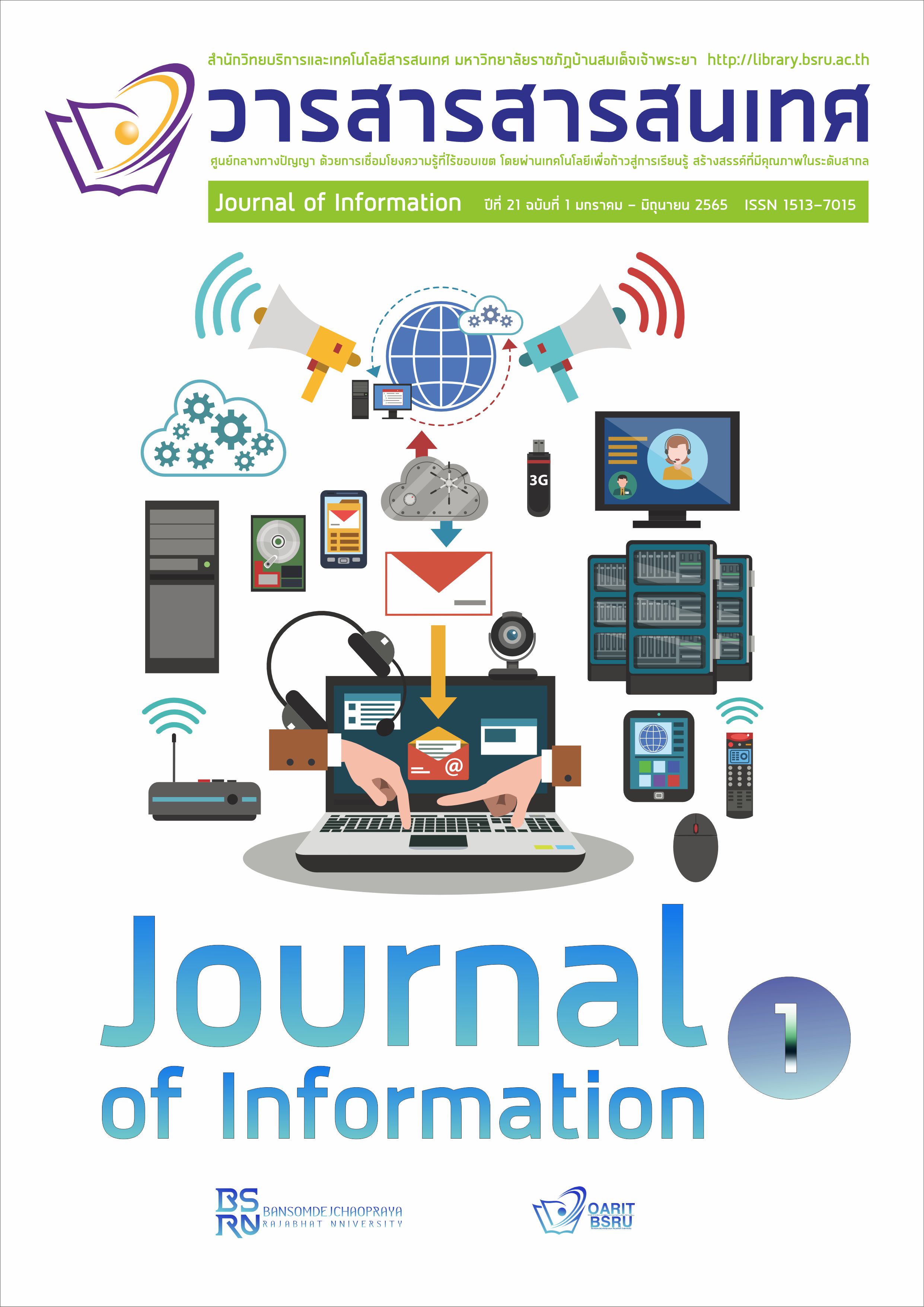A Supporting Program of Animation Screenwriting Using an Ontology Knowledge Base to Improve Synthetic Thinking
Keywords:
Animation Screenwriting, Developing Synthetic Thinking, Developing a Support ProgramAbstract
The objectives of this research to 1) develop and design a knowledge base on animation screenwriting ontology 2) develop and design a supporting program of animation screenwriting using an ontology knowledge base to improve synthetic thinking 3) assess the effectiveness of a program. The sampling group in this research used purposive random sampling method. The group is 45 Thai undergraduate students, 5 experts in computer and digital media and 5 experts in ontology technology. The tool for this research follows as: 1) Appropriateness assessment form of Knowledge Structure by animation screenwriter experts . By this form calculated for the Index of Item-Objective Congruence (IOC) is 0.5, 2) Appropriateness assessment form of ontology by ontology technology expert. The form calculated for the Index of Item-Objective Congruence (IOC) is 0.5, 3) User Satisfaction Survey of a supporting program of animation screenwriting using an ontology knowledge base to improve synthetic thinking and this calculated for the Index of Item-Objective Congruence (IOC) is 0.73, and 4) a supporting program of animation screenwriting using an ontology knowledge base to improve synthetic thinking.
The results found that the assessment of the appropriateness of the knowledge structure from 5 animation screenwriters experts. Assessment through coefficient of conformity (IOC) was found to be at a high level ( = 3.57). For evaluating aspects of the ontology design to implement in the program. Assessment through the coefficient of conformity (IOC) was found to be at a high level ( = 4.06). And the aspect of satisfaction using the supporting program of animation screenwriting. Assessment through coefficient of conformity (IOC) was at the highest level ( = 4.51).
References
จิรัฎฐา ภูบุญอบ และวรวิทย์ สังฆทิพย์. (2556). การออกแบบสถาปัตยกรรมออนโทโลยีเพื่อบูรณาการข้อมูลสำหรับการบริหารงานกิจการนิสิต มหาวิทยาลัยมหาสารคาม.
การประชุมวิชาการมหาวิทยาลัยมหาสารคามวิจัย ครั้งที่ 9 (น. 271-280), มหาวิทยาลัยมหาสารคาม, มหาสารคาม.
ทองพูล หีบไธสง. (2557). การเพิ่มประสิทธิภาพของระบบสารสนเทศดั้งเดิมด้วยออนโทโลยี. ว.เทคโนโลยีสารสนเทศ. 9(1), 67-72.
ธีรวิชญ์ วงษา และรัฐสิทธิ สุขะหุต. (2557). ออนโทโลยีกับการจัดการความรู้. ข่าวสารคณะวิทยาศาสตร์ มช. (น. 1-3).
Chung, H. S., & Kim, J. M. (2012, March). Ontology design for creating adaptive learning path in e-learning environment. In Proceedings of the
international MultiConference of engineers and computer scientists (pp. 585-588). Hong Kong
Hitzler, P., Gangemi, A., & Janowicz, K. (Eds.). (2016). Ontology engineering with ontology design patterns: foundations and applications.
IOS Press.
Lombardo, V., & Pizzo, A. (2014). Ontology–based visualization of characters’ intentions. Proceedings of International Conference on
Interactive Digital Storytelling. (pp.176-187). Springer, Cham.
Marx, C. (2012). Writing for animation, comics, and games. Routledge.
Na Chai, W., Ruangrajitpakorn, T., & Supnithi, T. (2017). A Tool for data acquisition of thinking processes through writing. In The 25th
International Conference on Computers in Education (ICCE2017) (pp. 80-85), Chirstchurch, New Zealand.
Na Chai, W., Ruangrajitpakorn, T., & Supnithi, T.. (2018, November). A Supporting tool for learning to improve thinking skill through reading
activities. In 2018 International Joint Symposium on Artificial Intelligence and Natural Language Processing (iSAI-NLP) (pp. 1-5). IEEE.
Downloads
Published
How to Cite
Issue
Section
License

This work is licensed under a Creative Commons Attribution-NonCommercial-NoDerivatives 4.0 International License.
บทความ ข้อความ ภาพประกอบ และตารางประกอบที่ลงพิมพ์ในวารสารเป็นความคิดเห็นส่วนตัวของผู้นิพนธ์ กองบรรณาธิการไม่จำเป็นต้องเห็นตามเสมอไป และไม่มีส่วนรับผิดชอบใดๆ ถือเป็นความรับผิดชอบของผู้นิพนธ์เพียงผู้เดียว






